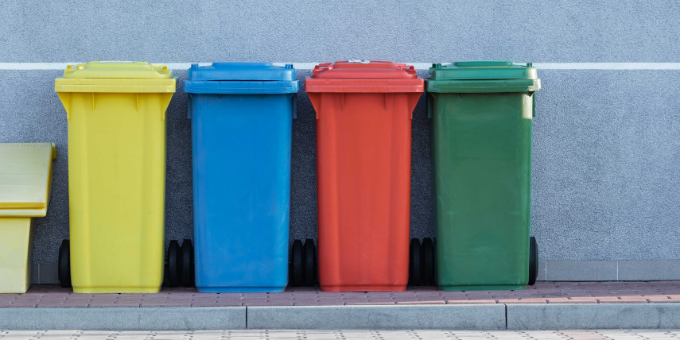Canterbury-Bankstown council has recently been in the news for mixing yellow recycling bins with red bins for regular rubbish.
After being caught on camera, a media frenzy was sparked around this practice, which, according to the council, had been going on for 10 years. Along with being a nuisance for residents who painstakingly sorted their rubbish into the correct bins, it’s also a setback in the push to get Aussies recycling.
The reason cited for this recycling blunder was simply that the trucks couldn’t both fit down the narrow streets – but there are other reasons some rubbish collectors may mix bins – or even leave them. Some of these are in our control and involve a couple of simple mistakes we make when doing our recycling. Here’s what to do:
- Don’t bag your recycling: Place items in this bin loosely to ensure your rubbish gets recycled.
- Clean and empty your recycling: Be sure to rinse off any food or liquid on your bottles or containers
So, do we still need to sort our rubbish?
The short answer? Yes. The long answer is a little more nuanced – it’s true that these collectors having been mixing bins into the same truck for years, but don’t let this deter you. It’s not a collective occurrence, with many councils sorting red and yellow bins properly – if in doubt, get in contact with your local council and ask. Plus, there are a host of environmental benefits associated with recycling.
With nearly 80 million tonnes of waste in Australia every year, to say we have a bit of a landfill problem would be the understatement of the decade. Plastic is one of the big offenders with Aussies wasting 3.5 million tonnes of plastic each year, and with only 12% of plastics recycled in 2020 – and over 80% going straight to landfill – this furthers the dangers to our environment. 130, 000 tonnes of plastic are leached into our oceans every year, posing a risk to marine life, and even ourselves.

Microplastics have been found in our water sources, with Orb Media testing both bottled and tap water sources and finding 80% of these water samples were contaminated with microplastics. How appetising. But these plastics can have devastating effects on our gut health and hormones, this is because these chemicals often mimic our existing hormones and the result is a disturbance to our system, which has knock-on effects for our whole body.
Recycling is one way to reduce the amount of plastic building up in landfill and leaching into the waterways.

While we’re on the topic of sustainability - don’t forget that other category – compost. This also plays a role and reduces the amount of waste destined for landfill. An impressive 35% of Aussies have gotten into composting, but there’s room for a lot more to join the party and experience benefits like getting a potent plant fertiliser and reducing waste and pollution.
With half of allfruit and vegetable produce wasted and nearly 80 million tonnes of other waste clogging up landfill in Australia every year, composting poses part of the solution. Especially when it comes to household waste, with Aussie households wasting 28% of food purchases. This all starts to add up and plays a role in climate change – this is because food wastage is a big contributor to climate change due to the methane released from produce scraps.

Anyone can get started with composting, whether you live in a small apartment or have a big garden – there are only a few requirements to get your compost up and running.
Here's how to get started with composting.
- If your compost heap will be outside, pick a shady spot near a source of water. If it’s indoors, simply grab a plastic, steel or ceramic container (other materials will work too, as long as they’re sturdy) and set it up on your kitchen bench top.
- Mix your brown materials (leaves, branches, coffee grounds) with greens (fruit and veggie scraps) in a 3 to 1 ratio.
- Give your compost some moisture, but be sure not to waterlog it.
- Now all that’s left is to wait! When the compost has darkened in colour and no longer has visible bits of food scraps, it’s ready to use. We recommend using it as a fertiliser for the garden – or even indoor pot plants.
Recycling and composting are simple ways to keep masses of waste from piling up in landfill – and enjoy some of the fringe benefits too.






Leave a comment (all fields required)